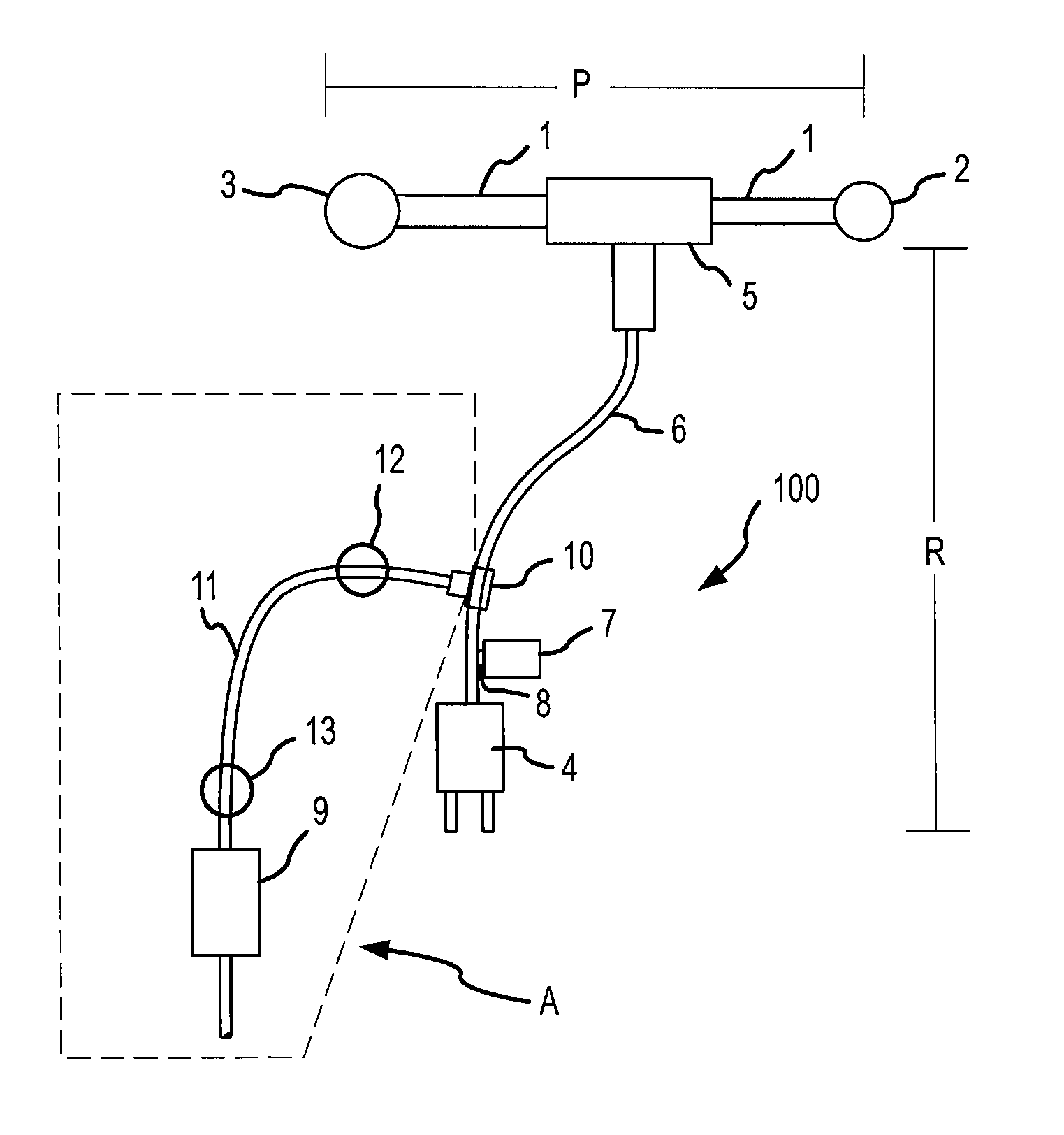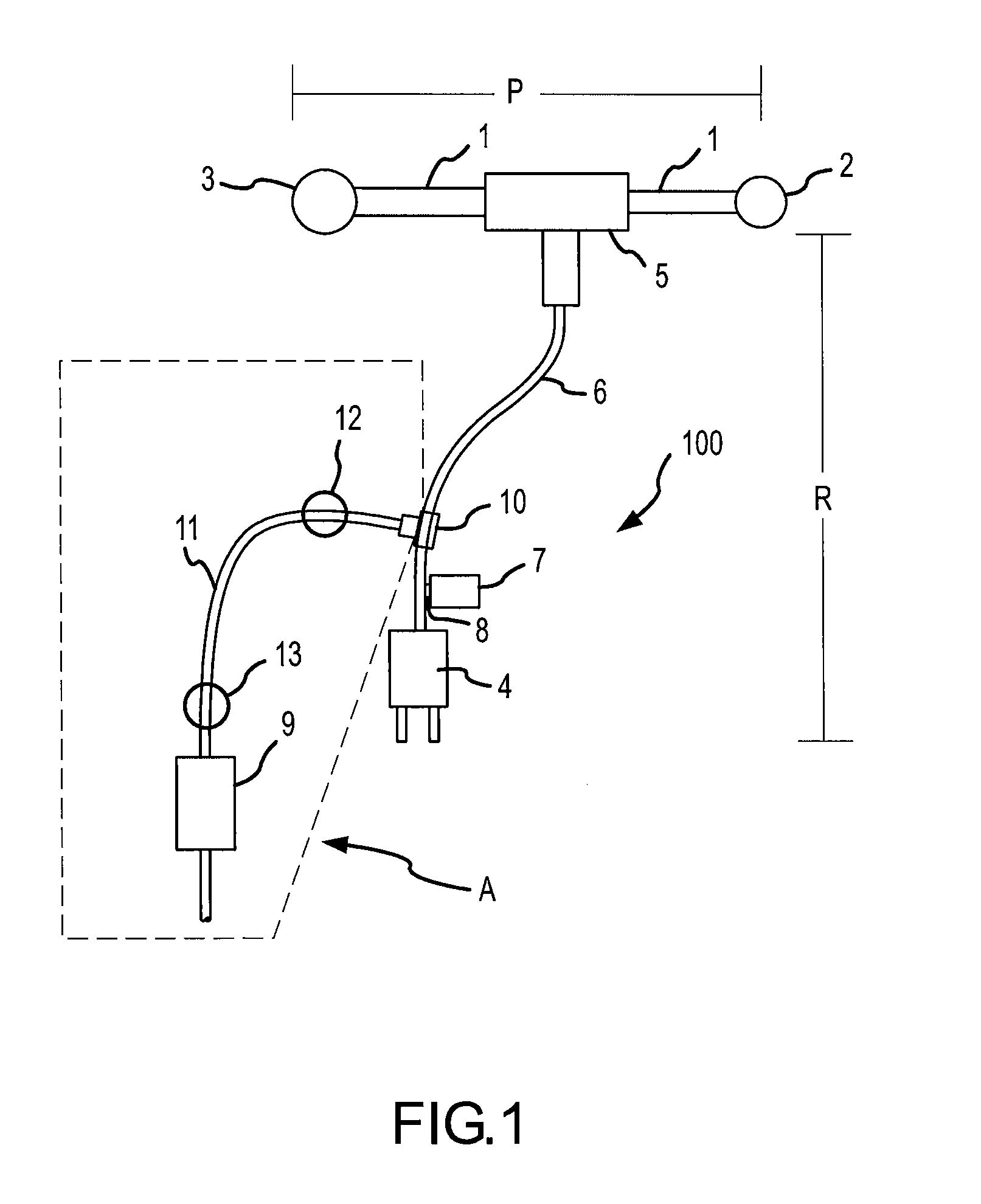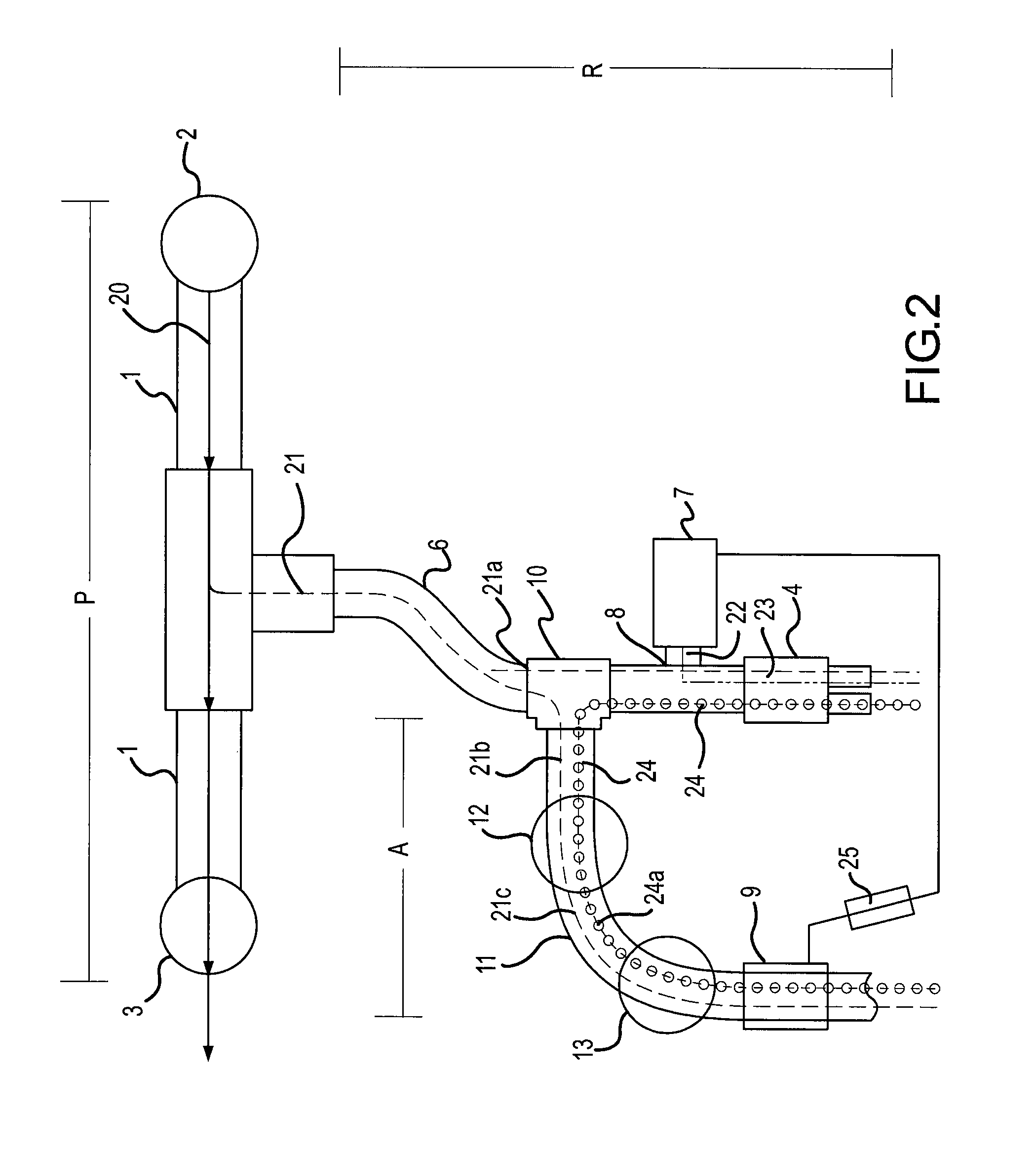Aerosol delivery apparatus and method for pressure-assisted breathing systems
- Summary
- Abstract
- Description
- Claims
- Application Information
AI Technical Summary
Benefits of technology
Problems solved by technology
Method used
Image
Examples
example 1
[0034] A CPAP system of the present invention such as illustrated in FIGS. 1 and 2 may be used for respiratory treatment of an infant. The system may be pressurized to a pressure of 5 cm H2O and a constant flow of air may be supplied by flow generator 2 into pressure-generating circuit P at a rate of 10 L / min. About 1 L / min (10%) of the air flow in pressure-generating circuit P may flow into flexible tube 6 as flow 21. During inhalation by the infant through nasal cannula 4, about 20% of flow 21 (identified in FIG. 2 as flow 21b) may be diverted into tube 11 at junction 10 by appropriately adjusting orifice valve 12 to produce a flow rate for flow 21c of about 0.2 L / min (0.2×1 L / min). Flow 21c may also pass through a disposable filter 13, but since flow 21c contains only inhalation air containing very little, if any, contamination, nothing significant should be removed from flow 21c by the filter. Flow 21c then may pass through the Omron flow sensor described above at a flow rate of...
example 2
[0037] Referring to FIG. 3, CPAP system 300 was attached to a breathing simulation piston pump 30 (commercially available from Harvard Apparatus, Holliston, Mass. 01746) to simulate an infant's breathing cycle. CPAP system 300 included auxiliary circuit A comprising pressure valve 38, disposable filter 39 and flow sensor 40 connected to respiratory circuit 42 through tube 43 in accordance with the present invention. A removable filter 31 was placed at the inlet of pump 30. An adapter 32 with two orifices 33 representing infant nares (Argyle nasal prong commercially available from Sherwood Medical, St. Louis, Mo. 63013) was connected to filter 31. Nebulizer 37 (Aeroneb® Professional Nebulizer System commercially available from Aerogen, Inc., Mountain View, Calif.) was placed in respiratory circuit 42 near adapter 32 so as to deliver an aerosolized drug into the air flow passing through orifices 33. During the operation of pump 30, air containing the entrained aerosolized drug flowed ...
PUM
 Login to View More
Login to View More Abstract
Description
Claims
Application Information
 Login to View More
Login to View More - R&D
- Intellectual Property
- Life Sciences
- Materials
- Tech Scout
- Unparalleled Data Quality
- Higher Quality Content
- 60% Fewer Hallucinations
Browse by: Latest US Patents, China's latest patents, Technical Efficacy Thesaurus, Application Domain, Technology Topic, Popular Technical Reports.
© 2025 PatSnap. All rights reserved.Legal|Privacy policy|Modern Slavery Act Transparency Statement|Sitemap|About US| Contact US: help@patsnap.com



